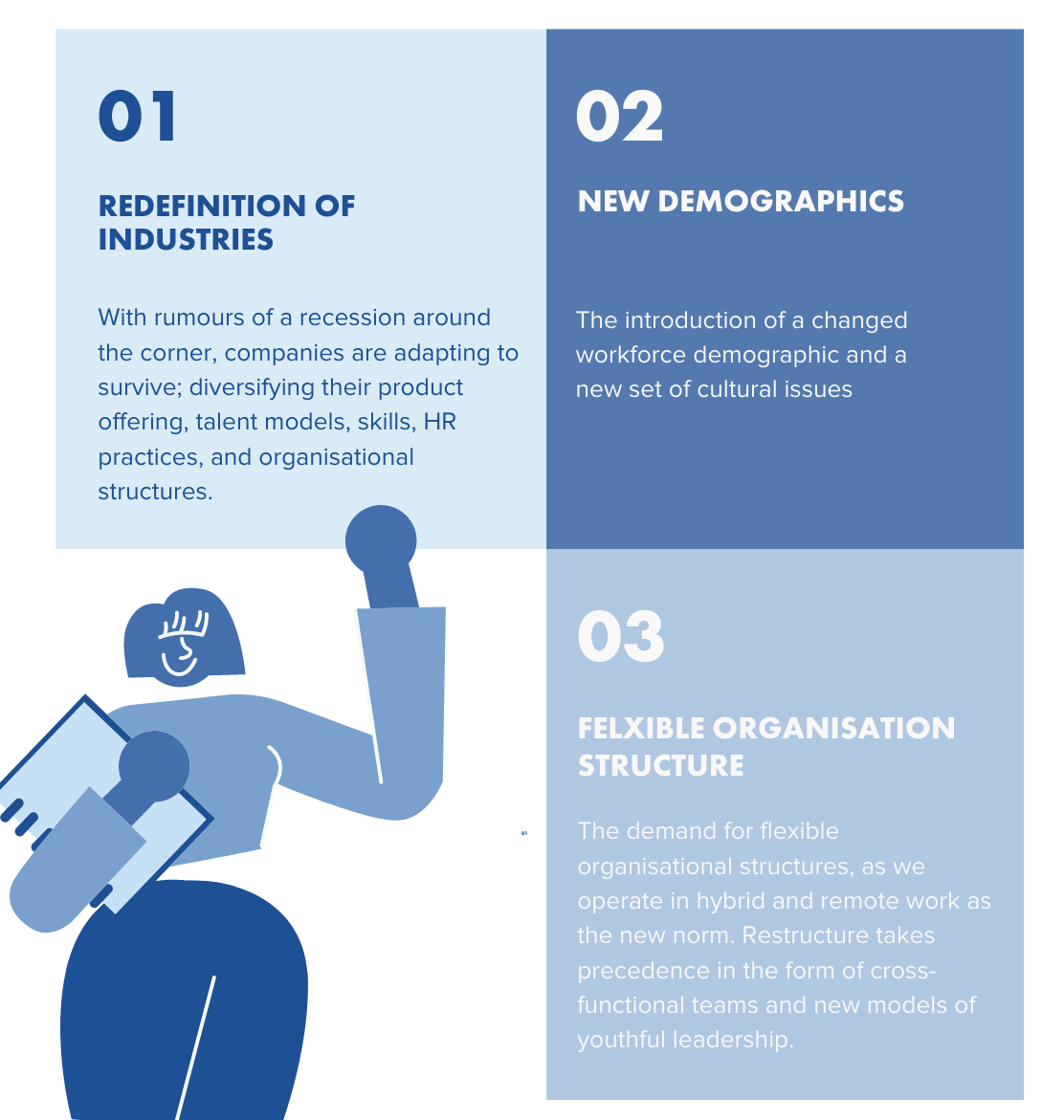An overview of the most significant challenges in the 2023 hiring landscape and how reshaping your hiring strategy will help you navigate it.

Challenges in the 2023 hiring landscape:
A) Redefinition of industries - With rumours of a recession around the corner, companies are adapting to survive; diversifying their product offering, talent models, skills, HR practices, and organisational structures.
B) There is an increasing need to grow revenue at lower cost - through retraining and reskilling existing talent in-house.
C) The introduction of a changed workforce demographic and a new set of cultural issues.
D) The demand for flexible organisational structures, as we operate in hybrid and remote work as the new norm. Restructure takes precedence in the form of cross-functional teams and new models of youthful leadership.
Here's how to adapt your hiring strategy to thrive in this rapidly changing environment.
Remodel hiring campaign
-
Ensure Job descriptions focus on the skills that will guarantee success when in the role, as opposed to focusing on generic work experience and education.
-
Candidates that have overlapping skills should be considered simultaneously for multiple roles.
- Make full use of tech, video interviews and AI-based talent screenings to test for technical or interpersonal skills.
Dynamic Organisation Structure
-
Candidates favour dynamic organisational structures that allow team flexibility in their work hours and hybrid work schedules.
-
Companies should embrace on-demand workers (even for high-salary roles) this will increase labour-force flexibility and innovation.
Make use of alternative candidate streams
-
Aim to attract alumni back into your organisation to gain valuable institutional knowledge.
-
Recruiters are increasingly engaging with passive candidates (especially within lower and middle-level roles) and acquiring top talent from this.
- Increase your offering for your employee referral program to attract highly skilled potential candidates.
Cater to new Demographics
-
Make use of automation within your recruitment process, as well as alternative communication channels such as QR and text messages.
-
Seek new ways of identifying talent within new demographics - such as on social media platforms, layoff lists or LinkedIn posts.
- Improve your employer brand, in particular, focus on your company culture as this is one of the most sought-after attributes for job-seekers in 2023.
- Use gender-neutral, inclusive language not just to advertise open roles within job postings, but throughout the interview process to encourage more diverse hires.
To learn more about how Thor Companies can support your business in these exciting but challenging times of hiring, get in touch.




